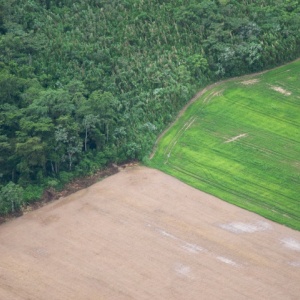
This paper in Science discusses the potential of yield increase incentives as a way of convincing farmers to save land to protect biodiversity rather than increasing farmland. The increase of agricultural land is one of the leading causes of biodiversity loss and greenhouse gas emissions in tropical countries. This paper argues that increasing yields on existing agricultural land can provide farmers with the incentive to spare land for wildlife and nature.
Abstract
Expansion of land area used for agriculture is a leading cause of biodiversity loss and greenhouse gas emissions, particularly in the tropics. One potential way to reduce these impacts is to increase food production per unit area (yield) on existing farmland, so as to minimize farmland area and to spare land for habitat conservation or restoration. There is now widespread evidence that such a strategy could benefit a large proportion of wild species, provided that spared land is conserved as natural habitat (1). However, the scope for yield growth to spare land by lowering food prices and, hence, incentives for clearance (“passive” land sparing) can be undermined if lower prices stimulate demand and if higher yields raise profits, encouraging agricultural expansion and increasing the opportunity cost of conservation (2, 3). We offer a first description of four categories of “active” land-sparing mechanisms that could overcome these rebound effects by linking yield increases with habitat protection or restoration (table S1). The effectiveness, limitations, and potential for unintended consequences of these mechanisms have yet to be systematically tested, but in each case, we describe real-world interventions that illustrate how intentional links between yield increases and land sparing might be developed.
Citation
Phalan, B. Green, R. E., Dicks, L. V., Dotta, G., Feniuk, C., Lamb, A., Strassburg, B., Williams,D. R., zu Ermgassen, E. Balmford, A., (2016) How can higher-yield farming help to spare nature?, Science, Vol. 351, DOI: 10.1126/science.aad0055
You can find related resources in the research Library categories on primary production: agriculture, climate change: mitigation, and land. See also keyword categories on land-sparing vs. land-sharing, land use and land use change, ecosystems and ecosystem services, landscapes, GHG impacts and mitigation. See also the category on decision making tools in the category theories, methods and tools.
See also this Science paper and this report, both about sustainable intensification, by the FCRN.
For a related paper, see this one on land sparing and GHGs from agriculture.



Post a new comment »